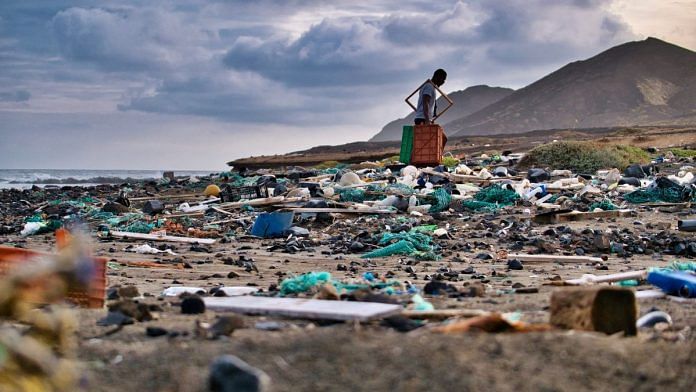The United Nations has only one year left to complete an international treaty to end plastic pollution. Solving the problem of plastic pollution once and for all would be a huge win for both the planet and people.
Without intervention, the world would generate a 3.5 kilometre-high mountain of plastic litter that would bury the entire island of Manhattan.
This aim of zeroing out plastic pollution by 2040 is to the plastic crisis as ambitious as what the 2ºC Paris Agreement goal has been to the climate crisis.
One critical and nagging issue in the scientific community has been how to end plastic pollution in less than two decades – given the complexity and enormity of the problem, both at global and national levels.
Pathways to end plastic pollution
At the global level, new findings from a joint research effort at the University of California Berkeley and the University of California Santa Barbara reveal that there is indeed a realistic pathway – in fact, multiple possible pathways – to end plastic pollution with the help of this treaty.
This discovery was made using artificial intelligence (AI) that forecasts how different treaty policies could together chip away at plastic pollution. Researchers found that including just nine policies in the treaty would reduce plastic pollution by 89% by 2040.
A few select policies in that package would have an especially outsized impact on creating that future world without waste. For example, a mandate to build new plastic products using at least 30% recycled plastic would cut plastic pollution by 29%.
Limiting non-essential plastic production in the same way we act to limit greenhouse gas emissions would, by itself, cause a similar 26% decline in plastic pollution.
Other influential policies include collecting a few cents or fractions of cents from the sale of plastic products to invest in recycling and waste management infrastructure and banning frivolous single-use plastics, like plastic grocery bags or take out containers.
Just as with climate change, a robust UN treaty on plastic pollution can only be made meaningful when it is reinforced at national level, with national leadership and action. Collaborative action is key to identifying these national needs and developing country-level plastic action roadmaps.
We need everyone across the plastic value chain involved, from those who produce and use plastic to those who collect it at end of life.
Inclusive approach to tackling plastic pollution
To make sure that no one is left behind in the decision-making process toward the transition, evidence-based approach and inclusive strategies are key. Numerous countries and regions, such as Ghana, are taking proactive steps towards a circular plastics economy.
In Ghana’s case, the nation has deployed the National Analysis & Modelling (NAM) Tool, developed by the Global Plastic Action Partnership (GPAP), to comprehensively assess their existing plastic flows.
This evidence-based data gives decision-makers the insights needed to create national roadmaps, which serve as guiding frameworks, enabling governments to turn their commitments into action and be prepared to deliver on an ambitious global plastics treaty.
Implemented through 13 existing National Plastic Action Partnerships (NPAP), with more partnerships in the pipeline, the GPAP extends its impact across various geographies.
Going beyond the data, the transformation of the plastics economy towards a circular model must include a thorough gender and inclusion approach. An inclusive strategy is vital for involving all community stakeholders, particularly women and other underrepresented individuals.
Only through such an approach can we ensure that decisions are both comprehensive and well-informed, fostering collaborative actions that bring about systemic change.
Nations of the world will convene next in Canada in April 2024 to move closer to completing the global plastic pollution treaty. The pace of progress thus far has left room for improvement.
Nevertheless, there is much hope in the scientific and environmental communities that countries around the world will not miss out on a once-in-a-lifetime opportunity to take combined international and national actions that could bring an end to plastic pollution forever.
This article was first published in the World Economic Forum.



